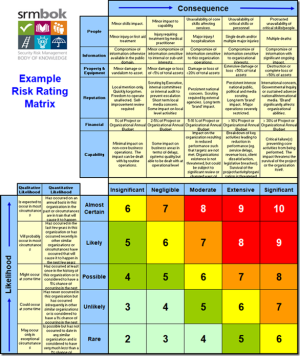The mature study of the psychology of motivation ought to be foundational for any safety person.
The foundation for understanding human motivation is one’s worldview and understanding of personhood.
One thing is for sure, neither Behaviourism or BBS have a foggy clue about motivation. This 1930s theory explains nothing except the bias of the beholder who is indoctrinated to think that life is about the sum of inputs and outputs. How convenient this black and white concoction about humanity that finds comfort in false consciousness (https://safetyrisk.net/false-consciousness-and-perception-in-risk-and-safety/ ).
Then when things go wrong, Safety doesn’t question worldviews, it doubles down in greater vigilance chasing a theory that was demolished 50 years ago.
- How fascinating this industry consumed with non-compliance (https://safetyrisk.net/non-compliance-and-the-ten-fundamentals-of-motivation/) without any interest in understanding why.
- How fascinating this industry so fixed on training with little interest in learning (https://safetyrisk.net/motivation-learning-and-risk/). Even then, when the word learning is used, it’s just code for more behaviourist training.
- How fascinating this industry that seems to intentionally de-motivate people to a mature approach to tackling risk (https://safetyrisk.net/motivation-and-de-motivation-in-safety/).
- How fascinating this industry that has no interest in goal states and how 95% of all decision making is unconscious (https://safetyrisk.net/understanding-goal-states-motivation-and-spor-a-video/).
- How fascinating that Safety shows no interest in an ethic of risk and personhood (https://safetyrisk.net/personhood-and-risk/).
- Why is it that Safety has no interest in learning theory (https://safetyrisk.net/what-theory-of-learning-is-embedded-in-your-investigation-methodology/ )?
For those who want to understand motivation, perception, goal states and decision making, a first-year study in the profession of Teaching would be helpful. I wonder why professional teachers want to understand these things but Safety doesn’t?
It is as easy as looking at any safety text (S1 or S2) and asking the questions: How do people learn? Why do people do as they do? And, what is it to be an educated person?
These questions are never answered adequately by the behaviourist nonsense of ‘in and out’, ‘positive and negative reward’ or a study of ‘behaviours’ (https://edtechbooks.org/pdfs/mobile/studentguide/behaviorism.pdf).
Have a look at any Safety text and look at the language, it’s all about ‘behaviours’, ‘hazards’ and ‘controls’. It’s all mechanical as if persons are objects. Even when Safety finds some interest in ‘lead indicators’ its still founded on the assumptions of behaviourism.
You don’t have to work for long in the prison, youth detention and correction systems to know that behaviourism doesn’t work. Yet, even these systems continue to persevere with Cognitive Behavioural Therapies (CBT) as if there is no other worldview or approach. The CBT failure rate is about equal to doing nothing at all (https://www.researchgate.net/publication/51668138_Failures_in_Cognitive-Behavior_Therapy_for_Children; https://www.semanticscholar.org/paper/Treatment-failure-in-cognitive-behavioural-therapy%3A-Weck-Grikscheit/73f61a0591d7bad9e5a99e1cb9f147a1292ab3d1). Belief in CBT is belief in CBT, it doesn’t adequately explain an understanding of persons.
Once you have a paradigm and worldview that seems to explain the world, you then look at the world through the lens of that view and explain everything by that view, even though such a view doesn’t work. This is best explained in Figure 1. The Chaotic World. and Figure 2. Interpreting the World.
Figure 1. The Chaotic World.
Figure 2. Interpreting the World.
What a behaviourist worldview does is place order over disorder, where there is none. Yet, it is such a convenient theory, it just doesn’t work. Neither does it explain why people do as they do. However, once one has been indoctrinated with such a view (and this is what the Safety curriculum does) we then make up our own behaviourist reality through confirmation bias. It’s just that such a concocted reality doesn’t explain why people do as they do.
What happens most often when BBS doesn’t work, Safety doesn’t jettison the worldview, it just doubles down in greater brutalism, as if more brutalism works.
Motivation is about what happens between persons, and most of what happens cannot be seen, it’s unconscious and, it is perceived unconsciously. So, running around observing behaviours as some kind of indicator of motivation is based on a false assumption that a behaviour is a manifestation of a belief.
When we understand persons in a non-binary way, we begin to understand the complexities of personhood and motivation. When we know that relationships, Socialitie, ethics, learning and culture are a wicked problem, then we tackle these differently. Instead, we focus on the Zone of Reciprocal Relationship (ZRR) (Figure 3. Zone of Reciprocal Relationship) and ALL that happens between persons. This is NOT a mechanical or binary process.
Figure 3. Zone of Reciprocal Relationship
Once we ditch the false dichotomy of behaviourism we can then start to understand why people do as they do. Once we un-learn the false consciousness of behavioursim we can start to understand the triarchic nature of motivation and personhood. This is articulated well by Higgins (https://www.researchgate.net/publication/13814859_Beyond_Pleasure_and_Pain). When we move away from the disembodied notion of persons embedded in behaviourism we then can begin to understand how decision making is NOT brain-centric but Mind-centric.
Motivation is all about the effectiveness of Meaning-Purpose, Value-Truth and Control-Coherence. This is represented at Figure 4. A Triarchic Understanding of Motivation.
Figure 4. A Triarchic Understanding of Motivation
Once one has ditched the delusions of behaviourism and embrace a Triarchic understanding of motivation a great deal of responsibility then falls on leadership and management in the way motivation works in an organisation. No amount or reward or punishment affects Meaning-Purpose, Value-Truth or Control-Coherence. It is in these three that Vision is created, articulated and becomes the foundation for motivation.
When applied to the way people tackle risk, this model leads to better ownership, greater commitment and mutual approaches to shared responsibility. But the start to jettison behaviourism, this is the key.
This can be learned through various modules in SPoR that offer a Free Introductory SPoR Program (https://vimeo.com/showcase/4233556) to begin the journey away from behaviourism to a constructive, positive and meaningful approach to tackling risk so that motivation matters.
Soon we will announce a free coaching program to complement the Free Introduction videos, delivered by Matt Thorne (matthew@riskdiversity.com.au).
Unit 1 Part 1 – Introduction to the Social Psychology of Risk from CLLR on Vimeo.







Rob Long says
BTW, my philosophy has nothing to do with Albert Bandura or Reciprocal Determinism. I have very little resonance with Bandura’s Social Learning Theory. I find Bandura’s work simplistic and disconnected with how people learn through Socialitie and Embodiment. Mimetics is a weak explanation of how people learn and especially falls over when considering how language is learned. Bandura’s Bobo Doll is a great example of how children do NOT learn, Bandura just places his worldview over his observations to make them confirm his assumptions about learning. Again, simplistic and doesn’t come close to how violence is learned. Indeed, many of Bandura’s ideas are behaviourist and based on a reward behaviourist Mentalitie. In many ways Bandura was a behaviourist.
Similarly, Bandura was fixated on cognitvism and materialism and so, asserted that learning could be disconnected from change and movement.
The Social Psychology of Risk doesn’t come out of any tradition associated with Bandura and any constructed connection simply demonstrates that people reading my work don’t understand it nor have a Transdisciplinary filter with which to understand it.
If people want to understand my work there is plenty on line to read starting with the works of Ellul, Jung, Kierkegaard and Buber.
Rosa says
People like behavioral psychology because it is a simple explanation. People are anything but simple. Robs models are easy to understand, but not easy to implement because you have to have a measure of self-awareness and maturity. It is worth making the effort, because they are true reflections of how people think and what motivates us.
Rob Long says
Thanks Rosa. It is unfortunate that the easiest path is the most attractive but the least helpful. If only persons were simple, if only moral reality was simple, if only fallibility would go away. We can wish away as much as we want but if we desire to improve the well-being and safety of persons we need to take the road less traveled, the challenging path that requires a sophisticated, mature and wise approach to how people learn, and are motivated in tackling risk.